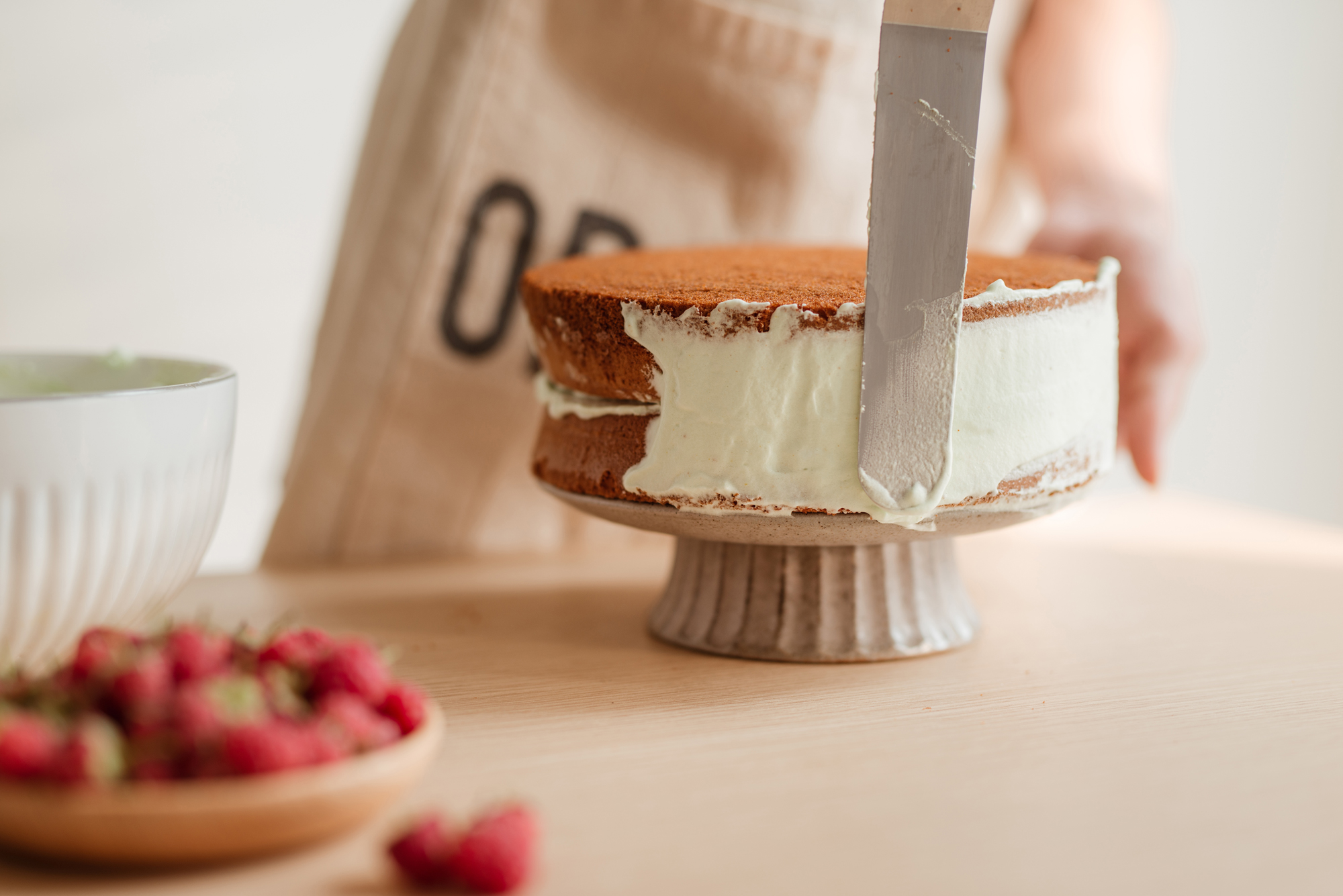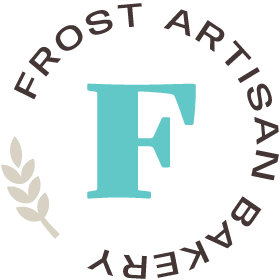This information is for inspirational purposes only. To learn more about Frost Artisan Bakery’s current menu and custom baked goods, please contact us.
Cake decorating can seem intimidating, especially if you’re just trying it for the first time. However, a few simple techniques and the right tools can allow you to elevate a plain cake into a work of art, just like a professional baker. Whether you’re preparing for a special occasion or see cake decorating as a fun hobby, these basic cake decorating tips can help you approach cakes with confidence and creativity.
Decorating Tools to Have
Before you start off decorating, the team at Frost recommends these essential tools:
- An offset spatula for spreading frosting
- A cake smoother to even out frosting
- A turntable so you can spin the cake and frost at the same time for better, faster coverage
- Piping bags and tips to create different designs
- Parchment paper to practice your piping skills
Cool Cakes Before Frosting Them
Once your cakes are out of the oven, you need to cool them completely before you start decorating. If you try to assemble or frost warm cakes, the cake will stick to your frosting and leave you with a crumbly mess. Depending on the size and number of cakes, this could take almost an hour in the fridge.
Stack and Level Your Cakes
After your cakes are cooled, add the first layer to your platter. If you only have a single-layer cake, you can move on to the next step. However, multi-layered cakes require a little more finesse. Each layer must have the top section removed to create a flat surface. Get eye level and use a serrated knife or a cake leveler to even out the surface. Then, use a layer of frosting or filling between each layer to add flavor and serve as an adhesive.
Add a Crumb Coat
A crumb coat is a thin layer of frosting around a cake that provides you with a blank, flat surface to work on. Use a spatula to add frosting and smooth it thinly over the top and sides. You should be able to see the cake crumb underneath this coat. Then, put the cake back in the fridge or the freezer to cool down again. This allows the crumb coat to set and makes it easier to add more frosting later.
Add More Frosting
Use a spatula to add frosting around the cake. Make sure your frosting is sturdy but also easy to spread. Buttercream frosting is ideal for beginnings because it spreads nicely with a spatula and works well in a piping bag. After adding frosting all over, use a cake smoother and spin the turntable to get a nice flat finish. Then, put the cake back in your fridge or freezer again until the frosting is set.
Add Textures and Designs
As a beginner, you’ll probably want to keep your decorating simple. But don’t worry; a simple cake done well is still really eye-catching. For piping tips, you’ll want to have an open star tip for swirls and borders, a closer star tip for small details, and a round tip for outlining, writing, or dots. Practice applying pressure to the piping bag and coming up with designs on parchment paper: sprinkles, glitter, and fresh fruit are great edible toppers to complete your masterpiece.
Visit Frost Artisan Bakery
We’re all about creativity at Frost. Every day, we stock up our display cases with freshly baked and decorated treats made to inspire. Stop by today to check out our menu and find ideas for your next cake.


